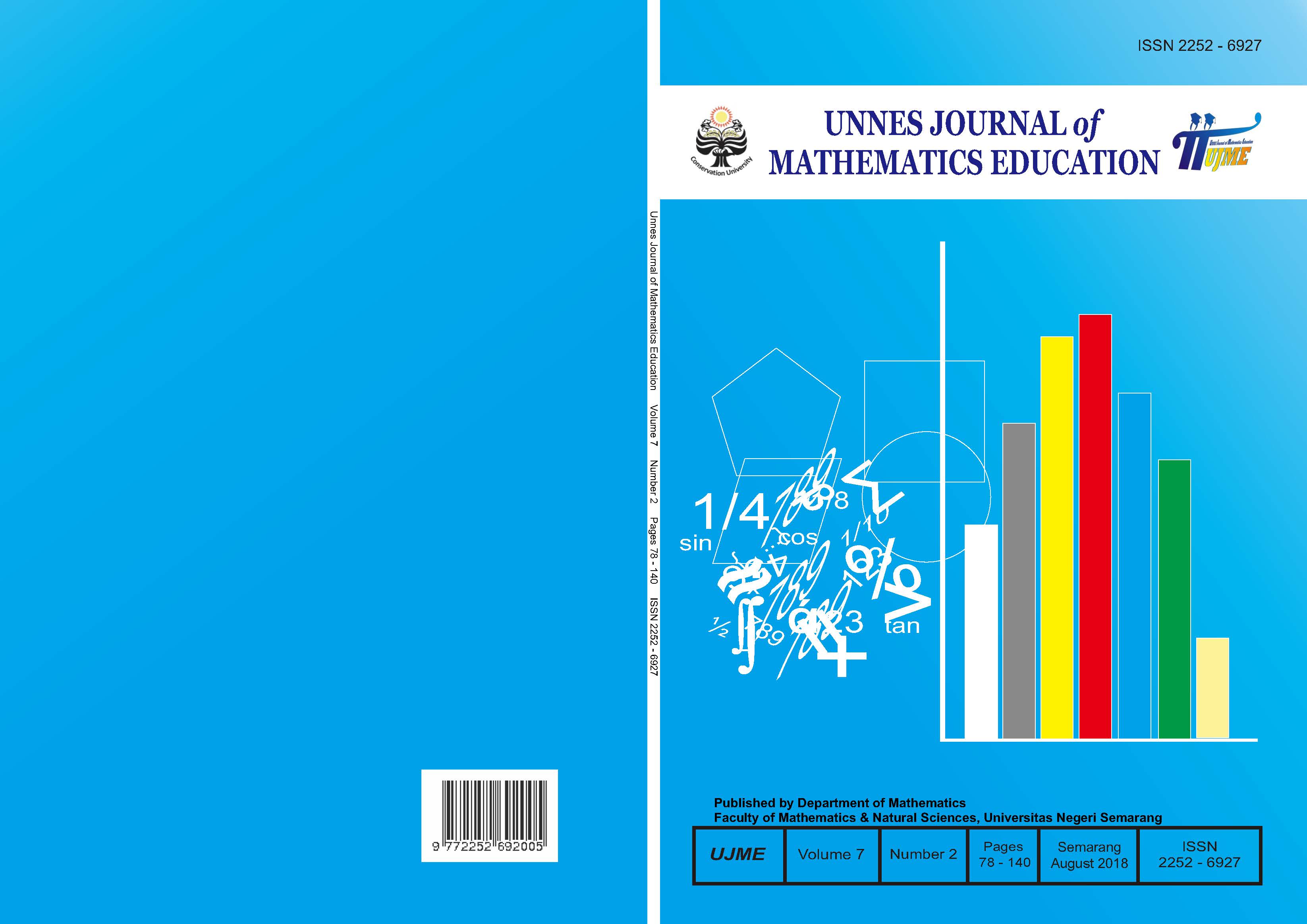Mathematical creative thinking ability viewed from the types of personality on CPS learning model
##plugins.themes.academic_pro.article.main##
Abstract
The purpose of this research was to describe the learning quality of CPS model towards mathematical creative thinking ability of students viewed from personality types. This research was a mixed method is the type of this research. Mathematical Creative Thinking Skill Test (MCTST) was analyzed quantitatively by classical completeness test and different test average. Furthermore, MCTST was also analyzed qualitatively to gain the description of mathematical creative thinking ability viewed from personality types. The results showed that the quality of CPS mathematics learning model in good category. The artisans subject did not complete mathematical creative thinking aspects, especially fluency and flexibility aspects, guardians subject met all four aspects of mathematical creative thinking, the idealist subject did not meet mathematical creative thinking aspects, especially originality and elaboration aspects, and the rational subject met all four aspects of mathematical creative thinking.
##plugins.themes.academic_pro.article.details##
References
Danielson, C. (2013). The Framework for Teaching Evaluation Instrument. Virginia: Associate for Supervision and Curriculum Development.
Hudojo, H. (2005). Pengembangan Kurikulum dan Pembelajaran Matematika. Malang: JICA.
Keirsey, D. (1998). Please Understand Me II. United States of America: Prometheus Nemesis Book Company.
M.J. Dewiyani S. (2008). Pengelompokan Siswa Berdasarkan Tipe Kepribadian sebagai Sarana dalam Pembelajaran Pemecahan Masalah Matematika. Proceeding National Seminar of Mathematics and Mathematics Education Universitas Pendidikan Ganesha. Bali.
Munandar, U. (2012). Pengembangan Kreativitas Anak Berbakat. Jakarta: Rineka Cipta.
Pepkin, K. L. (2004). Creative Problem Solving in Math. Tersedia di http://m2sconf.uh.edu/-honors/Programs-Minors/honors-and-the-scho-ols/¬houston-teachersinstitute/¬curriculum¬units-/pdfs/2000/articulating-the-creative-expe¬rien-ce/¬pep¬kin-00¬-creativity.pdf
Purnomo, D. J., Asikin, M., & Junaedi, I. (2015). Tingkat Berpikir Kreatif pada Geometri Siswa Kelas VII Ditinjau dari Gaya Kognitif dalam Setting Problem Based Learning. Unnes Journal of Mathematics Education, 4(2), 110-115.
Rahman, A. F., & Maslianti, M. (2015). Pengaruh Model Creative Problem Solving (CPS) dalam Pembelajaran Matematika terhadap Kemampuan Berpikir Kreatif pada Siswa Sekolah Menengah Pertama. EDU-MAT, 3(1), 67-74.
Sunaringtyas, A. D., Asikin, M., & Junaedi, I. (2017). The Student’s Analysis of Creative Thinking Process in Solving Open Problems viewed from Wallas Model on Problem Based Learning Model. Unnes Journal of Mathematics Education, 6(3), 288-293.
Undang-Undang Republik Indonesia Nomor 20 Tahun 2003 Tentang Sistem Pendidikan Nasional (Act of The Republic of Indonesia Number 20, 2003)
Wijaya, L., Rochmad, R., & Agoestanto, A. (2016). Analisis Kemampuan Berpikir Kreatif Matematis Siswa SMP Kelas VII Ditinjau dari Tipe Kepribadian. Unnes Journal of Mathematics Education, 5(2), 85-91.
